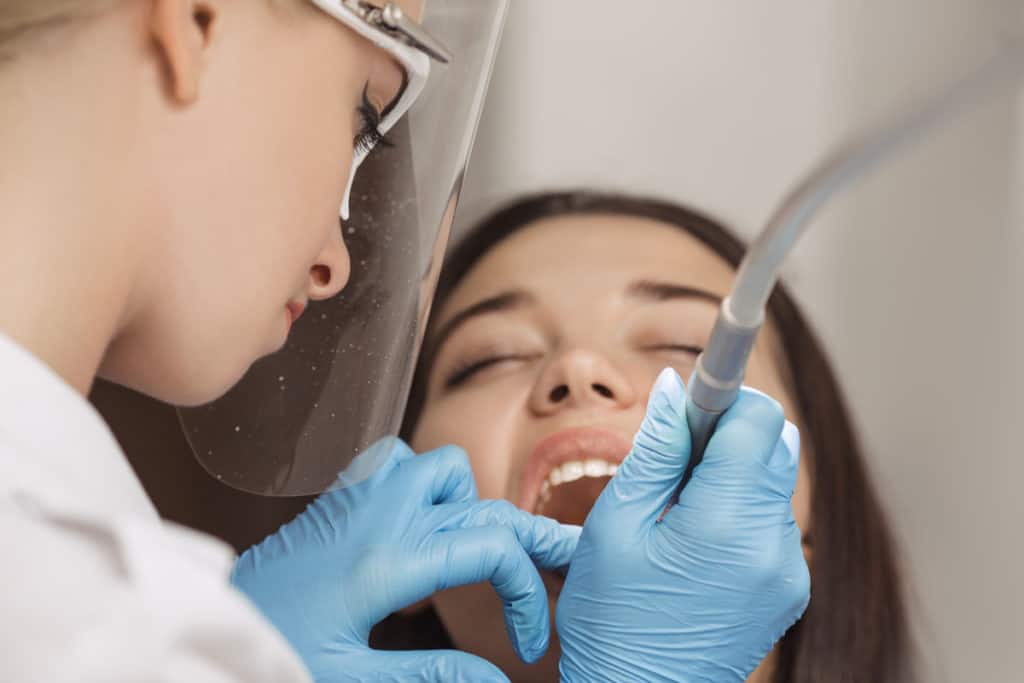Periodontics
Pocket Irrigation

Periodontal disease is a degenerative disorder that, if left untreated, results in tooth loss, bone and gum tissue loss, and gum inflammation. In order to slow the spread of the disease, a number of efficient treatments and procedures are available, such as pocket irrigation.
To stop hazardous oral bacteria from colonizing certain areas of the mouth, pocket irrigation works to remove plaque from the interdental (between teeth) and subgingival (under the gumline) areas of the mouth. Additionally, antibacterials are delivered to the subgingival regions using this technique.
Why Use Pocket Irrigation?
Oral irrigation, sometimes referred to as pocket irrigation, is a flexible dental procedure used for a variety of preventative measures. A modified oral irrigator can be used to do pocket irrigation at home or as part of a professional dental cleaning.
The following are the primary advantages of pocket irrigation:
- Cleaning between teeth: Pocket irrigators zap plaque, food scraps, and other dirt from there. By removing dangerous substances and germs, the gum pockets are kept cleaner and shallower, which supports the gum tissue’s continued health.
- Prevention of halitosis: In most cases, dental decay and leftover food between the teeth cause halitosis (poor breath). Water jets can wash out food particles and aid in cleaning above and below the gumline, where a toothbrush or dental scraper may not be able to reach.
- Subgingival cleaning: Pocket irrigators’ rounded tips reduce the possibility of tissue injury while cleaning beneath the gum line. By draining away germs, debris, and toxins from below the gumline, the side port opening makes thorough cleaning possible.
- Application of antimicrobials: Certain strains of dangerous oral bacteria have been eliminated and prevented using antimicrobial treatment. Successful pocket irrigation can be achieved by using antimicrobial agents alone or in combination with water.
What Does a Treatment for Pocket Irrigation Entail?
Pocket irrigation is typically done in conjunction with other dental procedures like professional cleanings or surgery for pocket reduction.
With the use of specialized scaling and root planing tools, the tartar and subgingival plaque will be eliminated during a pocket reduction procedure. An oral irrigator can be used to apply an antibacterial agent after the pockets are clear of debris. The toxic oral bacteria that are still present in the pockets will be reduced as a result.
A pocket irrigator may be used during a thorough cleaning process to clean the pockets following scaling and root planing. Once more, an antibiotic agent may be used to aid in lowering subgingival oral microorganisms.
Using a water jet or water pick, pocket irrigation may be done at home as part of your daily dental hygiene practice. Although water flossing is less damaging to soft tissue than dental floss, it shouldn’t be used as a substitute for getting your teeth professionally cleaned.

Book Appointment
Do you need to see a dentist? We’re here to help. Book your next dental visit with ease.
FREE IMPLANT CONSULTATION
CATEGORIES
- Cracked tooth
- Avulsed tooth
- Broken, lost, or loose crown
- Gum abscess
- Broken denture
- Toothache
- Head injury such as a fall
- Loose implant
FOLLOW US

Book Appointment
Do you need to see a dentist? We’re here to help. Book your next dental visit with ease.

Book Appointment
Do you need to see a dentist? We’re here to help. Book your next dental visit with ease.
FREE IMPLANT CONSULTATION
CATEGORIES
- Cracked tooth
- Avulsed tooth
- Broken, lost, or loose crown
- Gum abscess
- Broken denture
- Toothache
- Head injury such as a fall
- Loose implant
FOLLOW US
Take a peek inside our dental office.
What Our Practice Looks

Mon - Thu: 8:30 AM - 5:00 PM
Alternating Fri: 10:00 AM - 3:00 PM
Follow Us
Contact Us

Mon - Thu: 8:30 AM - 5:00 PM
Alternating Fri: 10:00 AM - 3:00 PM
Follow Us
Contact Us
© All Rights Reserved aestheticimplantdentistry.ca
Privacy Policy | Terms of Use | Sitemap
A Dentistfind Website



